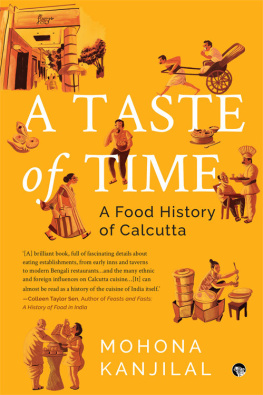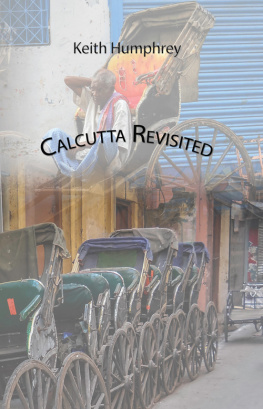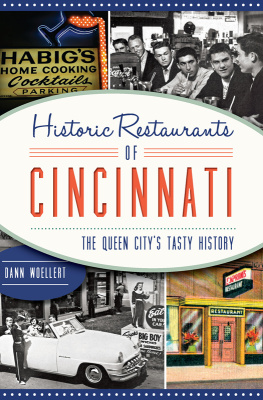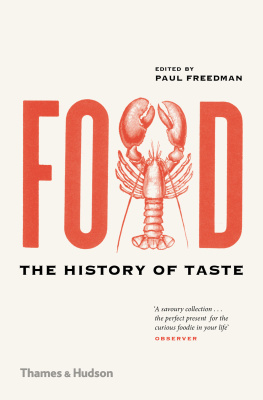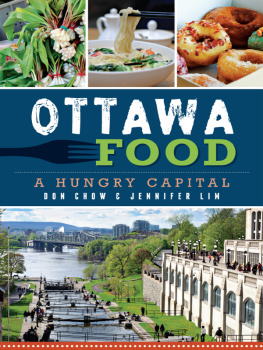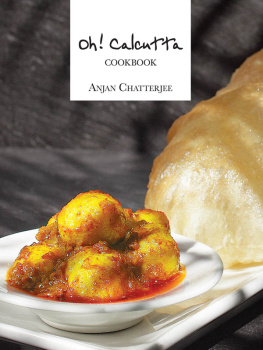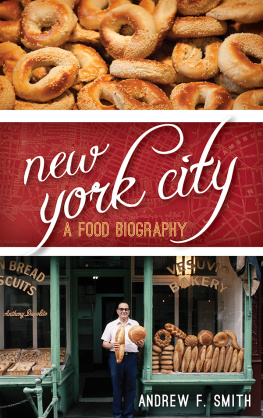Mohona Kanjilal was born in Kolkata and spent most of her childhood in Bengaluru. She began her career in Kolkata as a freelance journalist. It was during her stint with the newspapers that she got bitten by the writing bug and ventured into full-time writing after a few years. A Taste of TimeA Food History of Calcutta is her third book and first work of non-fiction. Prior to this book, she has authored two short story collections. She is an alumnus of Loreto College in Kolkata, a city that has been her home now for years.
also by mohona kanjilal
Circus & Other Stories
Treasure Hunt in Jolly Boa and Other Stories

To those who love the City of Joy
Well, he said, five hundred rooms, five hundred teapots. One cockroach. Very good average.
Arratoon Stephen, owner of Grand Hotel, to an irate guest
CONTENTS
Introduction
Cosmopolitan Calcutta

A glimpse of Barabazar, Calcutta, 1945
Source: Aakriti Art Gallery Pvt. Ltd, Kolkata
The Founding of Calcutta
I n the early seventeenth century, when the British East India Company began making inroads into India, Bengal was under the stable political leadership of the Mughals, though the Portuguese had already established themselves in trade in the port city of Chittagong (Chattogram) and the Dutch were involved in trading activities in the province. Bengal was a very wealthy region and when absorbed into the Mughal Empire in 1576, it was regarded as its wealthiest province. Then a globally prominent trading region, Bengal was regarded by the Europeans as the richest country to trade with and was renowned for its textile (particularly cotton, muslin and silk) manufacturing industry. Unfortunately, it is its enormous wealth that turned out to be Bengals Achilles heel as it attracted the avarice of many ruling powers. One of these players, Britain, was responsible for draining and bleeding this rich region of its wealth.
When the British reached the Subah (province) of Bengal, they began their trading operations in Baleshwar (Balasore) and Hariharpur (both in present-day Odisha). They developed excellent trade relations with the powerful Sheth and Basak merchant families in Sutanuti, a flourishing village on the banks of the Hooghly, which was already quite important in the textile trade. A relatively unimportant village nearby, lying between Sutanuti and Gobindapur, was then known as Kalikata. The three villages eventually merged to form what would be known throughout the world as the city of Calcutta (in Bengaliand officially, since 2001Kolkata).
The most widely accepted etymological explanation of the citys name comes from its association with the goddess Kali. Many linguistic variations suggest the goddesss close association with the city, such as Kali-kota (the home or abode of Kali), the Sanskrit Kali-kshetra, (the field or terrain of Kali) and Kali-ghatta (a north Indian distortion of Kalighat, a nearby settlement, which means the riverbank of Kali).
Credit for founding the city of Calcutta has historically been given to Job Charnock, an agent of the British East India Company, who had great faith in the commercial potential of the area. Charnock was born in England around 1630 and came to India in 165556. Within two years, he had become a junior member of the Council of Cossimbazar, a commercial town which is today a part of West Bengals Murshidabad district. Cossimbazar used to be a very prosperous town and a great trading centre in the Subah of Bengal. From Cossimbazar, Charnock was sent to Patna, where he was put in charge of the Companys factory. In 1680, he took charge of the Cossimbazar factory and in 1686, became the Companys agent for all of Bengal.
During Charnocks tenure in India, hostilities between the British and the silk weavers and traders of the Murshidabad area had resulted in the closing down of many British factories in Bengal. Charnock was forced to shift base to Hooghly. But there, too, he faced the ire of Subahdar Shaista Khan, the Mughal Governor of the Subah of Bengal, and had to retreat to the trading village of Sutanutihis first time staying at the site that would become an important part of the future city of Calcutta. It was during this period that he became convinced of the superior location and advantages of the flourishing textile village. He was convinced that Sutanuti would be the best place to establish the Companys headquarters in Bengal because of its strong military and commercial potential. His stubborn pursuit of this idea ultimately won over the reluctant council of the British East India Company in Madras. In March 1690, they procured permission from Emperor Aurangzeb in Delhi to re-establish a factory in Bengal for trading. The agent set sail for Sutanuti from Madras.
Charnock landed near Nimtala Ghat in Sutanuti on 24 August 1690, and is believed to have hoisted the British flag on the banks of the Hooghly. Calcuttas official birthday was thus considered to be 24 August 1690 for more than three hundred years.
In 2003, based on the findings of an expert committee of five eminent historians, the Calcutta High Court ruled that the city of Calcutta originated through a general process of rural settlement, clusters of which became part of the Companys trading factory in the last decade of the seventeenth century, and grew into a town in the eighteenth century. Historians have also pointed out that references have been made to a certain Kalikatah in some of Indias important writings, such as Bipradas Pipilais Manasa Vijaya, which was written in 1495 and refers to a place called Kalikatah and Abul-Fazls Ain-i-Akbari, which was written in Persian in 1596, and also refers to a place by the same name. Moreover, one simple founder could not have created the city. In addition to Charnock, people who contributed to the long process of the citys formation, included his son-in-law, Charles Eyre; John Goldsborough, an administrator with the British East India Company; Lakshmikanta Majumdar, who developed the land in the area; the Sheths and the Basaks, who traded with the British from the three villages; and the Sabarna Roy Choudhurys, one of the oldest zamindari families of Calcutta settled in Barisha (historically, one of the oldest boroughs in the city), who sold the villages to the British. Finally, the court ruled that Calcutta cannot have an official birthdayhence giving the ruling on the sobriquet Calcutta Birthday Case.
Regardless of his claim in history, it is indisputable that Job Charnock considered Sutanuti and its neighbouring areas to be an ideal site for the British East India Companys headquarters in India. He recognized that the area provided enough space to accommodate strong fortifications and a rapidly expanding trade centre. Its proximity to the sea made a commercially viable harbour possible. The site was also ideal from a defence point of view as it was protected by the Hooghly on one side and salt marshes and wetlands on the other. It was also well-connected to northern India by plenty of rivers, navigable canals and trunk roads.
Unfortunately, Charnock died within a few years of his landing and never saw the city that he dreamed of become a reality. In his essay, The Growth and Development of Old Calcutta, from the book CalcuttaThe Living City: Volume I: The Past (1990), eminent historian, researcher and author, P. Thankappan Nair, writes, The three villages [of Sutanuti, Gobindapur and Kalikata] were part of a khas mahal or imperial jagir (that is, an estate belonging to the Mughal emperor himself) whose zamindari rights were held by the Sabarna [Roy Choudhury] family of Barisha-Behala, in the southern suburbs of modern Calcutta (p. 11). The zamindari rights of the three villages of Sutanuti, Gobindapur and Kalikata were acquired by Charles Eyre, Charnocks son-in-law and successor, on 10 November 1698, nearly six years after Charnocks death. The deed for the lease of the three villages was drawn up between Sabarna Roy Choudhurys family and the British East India Company at Barisha Aatchala, for a sum of Rs 1,300. This was crucial in binding the three villages together and giving them the structure of a proper city. Gradually, the British East India Company procured the zamindari rights of the thirty-eight villages that surrounded their settlement in Calcutta.
Next page
